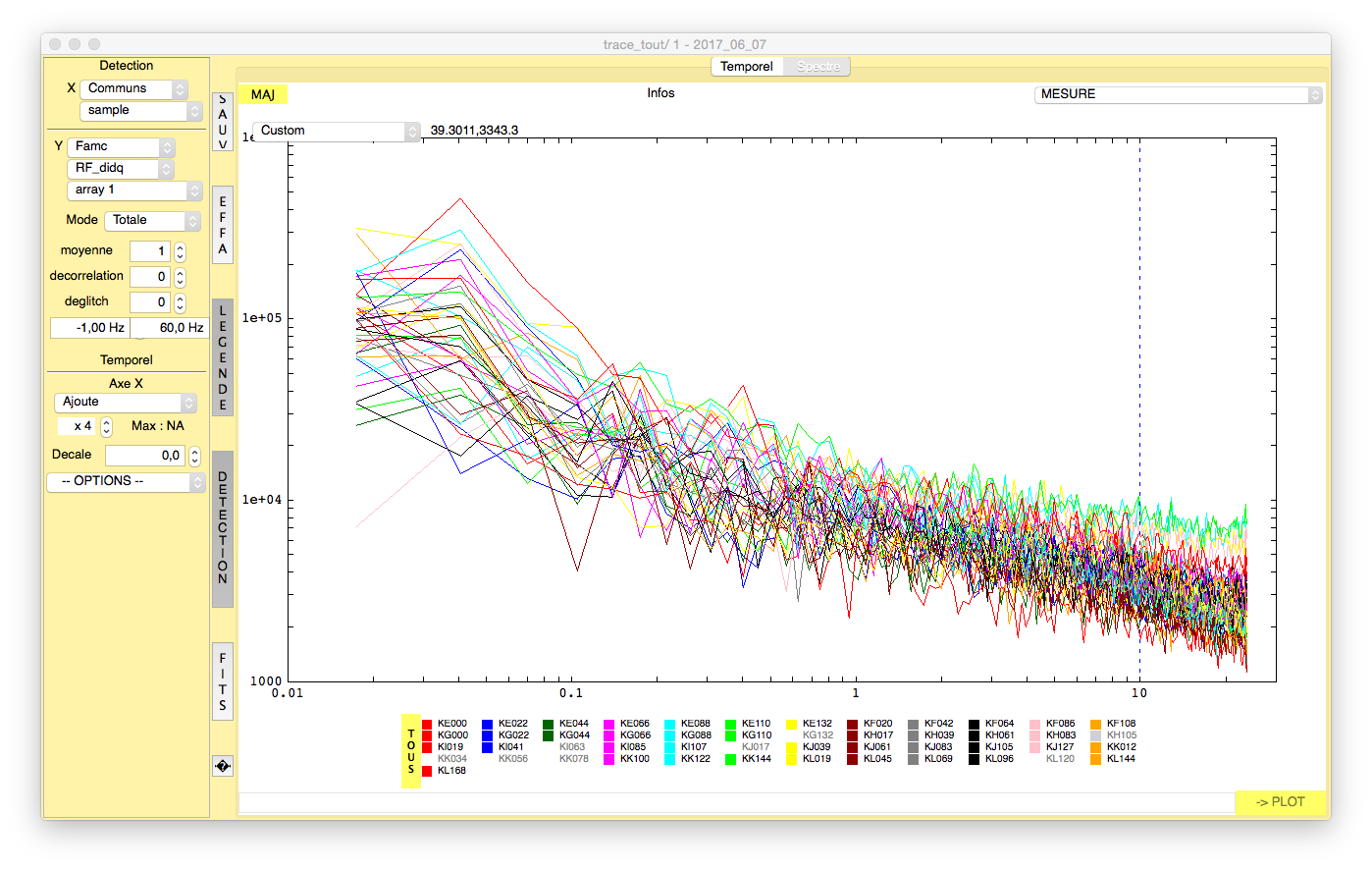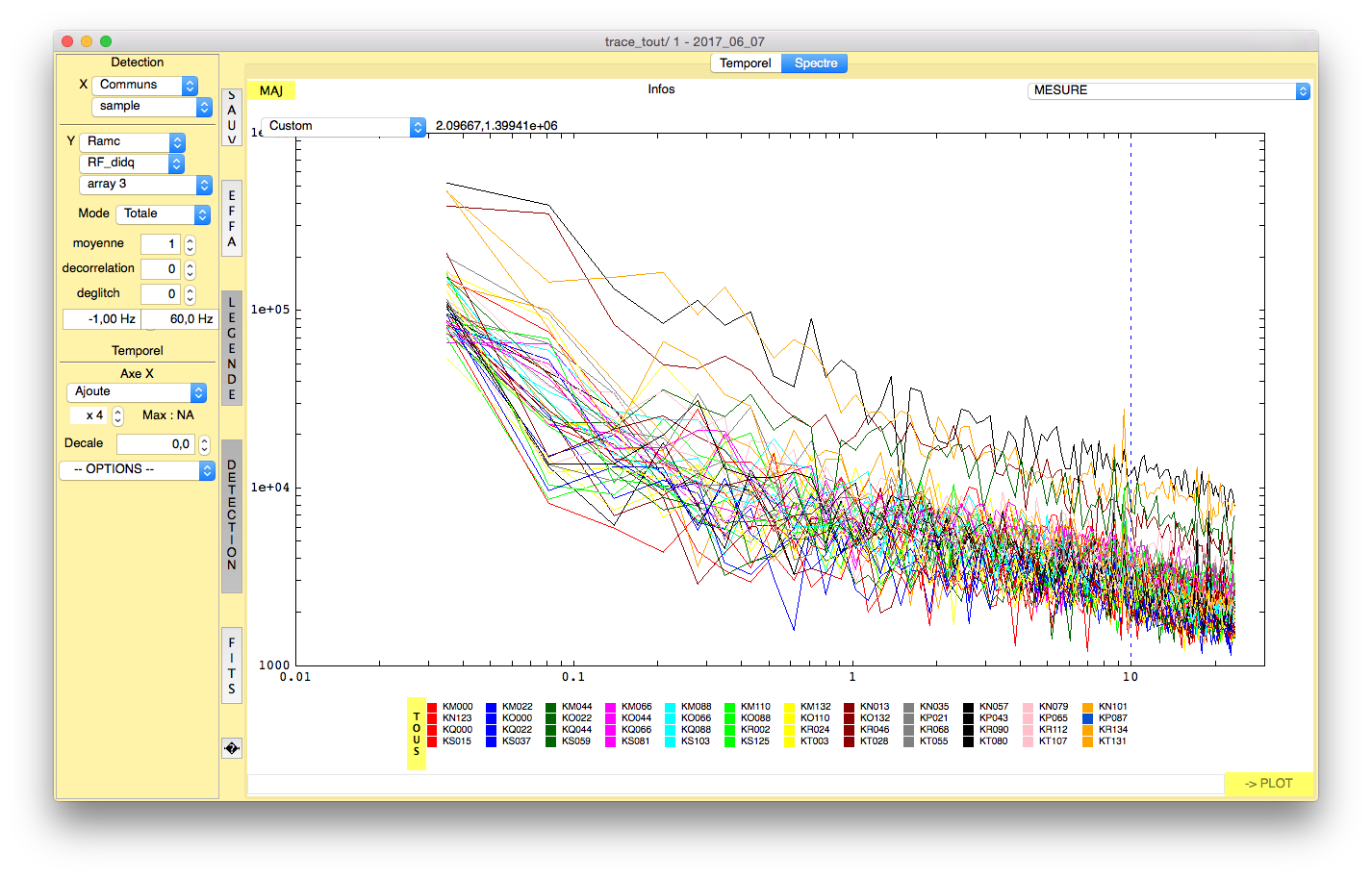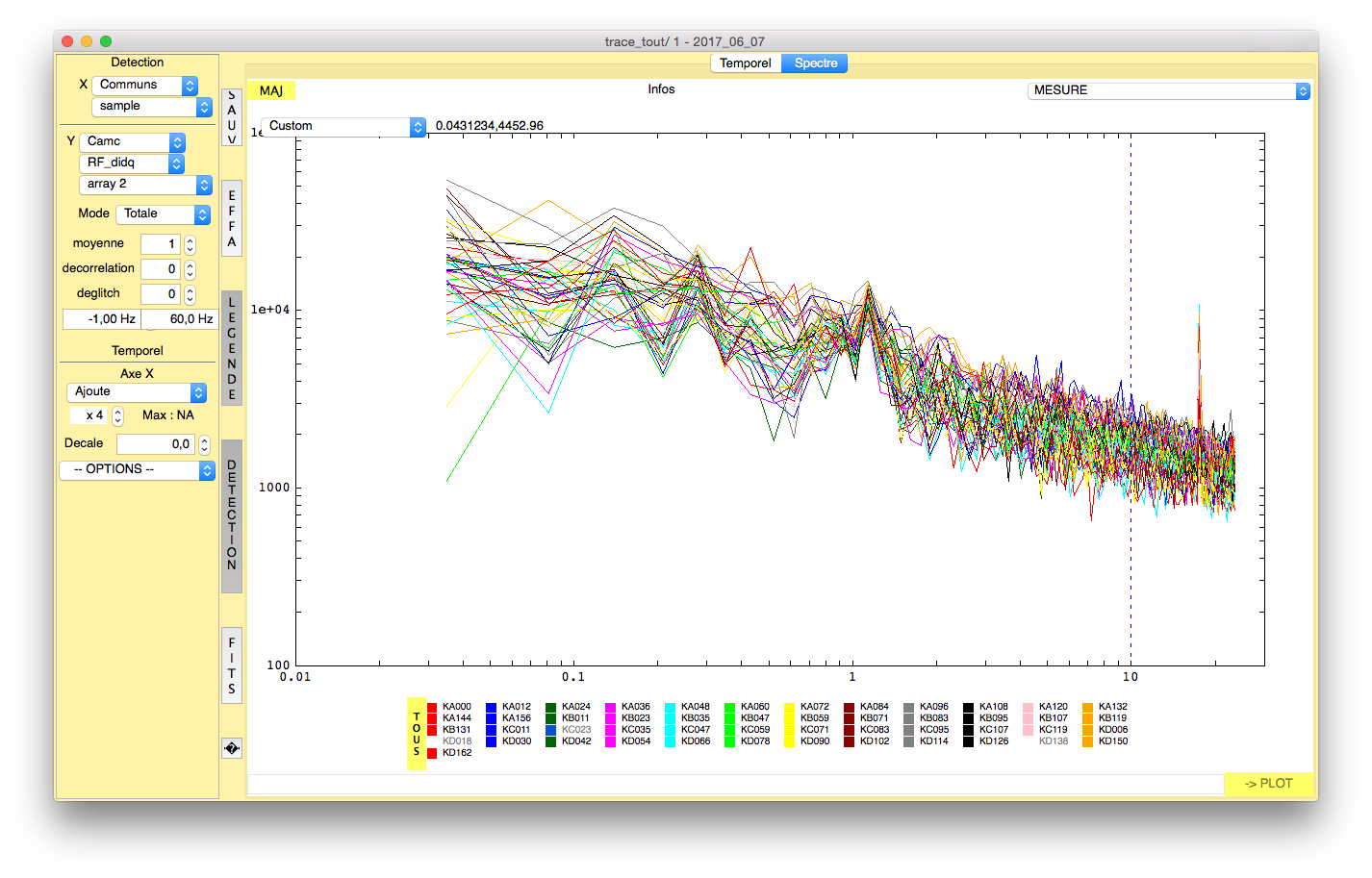Back to the NIKA2 Run 11 main page
Daily Reports
June 9, (Friday)
05h30: The night run was largely stable; the instrument and atmosphere (at least via tau_225, and estimate by-eye on the TOD) looked quite stable. However holes in the data have been observed and the acquisition in general has trouble to manage all the instruments at 47 Hz sampling frequency. In particular:
* "Mauvaise synchro" often shows up in the lecture window control. * The typical telescope messages delays are greater than 100 ms * Two recurrent messages in the acquisition window control: "pas d'emission smjd", "bad mjd error" * In the Antenna window control always shows this message: "Unexpected extra padding at the end of the file. This padding may not be preserved when saving changes."
June 8, (Thursday)
Before midnight, the cryostat looks to be working well, and the array is at ~200mK. We plan to observe a few quasars throughout the night with a "standard" script, with 2.98 Hz HWP rotation. Our plan (for the day) is to observe :
- 1651+399 from 19h* until 23h *For this night, we start at 21h
- 3C286 from, 23h until 01h
- 2200+420 from 01h until 04h
- 2251+158 from 04h until 07h } This (2251+158 is bright) with 2230+114 (fainter) are close together.
- 2230+114 from 04h until 07h } Once we have a good integration on 2251+158, we will focus on 2230+114
- 2200+420 from 07h until 09h We will observe this source again, once back in a reasonable range of elevations.
- Mars from 09h until 15h30
- 3C286 from 15h30 until 19h
* 18h30: We tried again to turn on the pump. It works now! We start the observations with the turbo pump on set at 30%. The temperature of the 1mm arrays is going to stabilize to about 200mK.
Division of shifts (in local time UT+2h):
23h-07h: A. Bracco, J.F. Lestrade, & C. Romero
- 07h-15h: N. Ponthieu, A. Andrianasolo, A. Catalano
- 15h-23h: Y. Shimasiri, A. Ritacco, A. Catalano
10h00: Start of the observations. The plan of the day is to start the observations on a planet (Mars) to characterize the instrumental polarization (i.e intensity to polarization leakage effect). We want also to characterize the noise due to the HWP modulation which is peaked at harmonics of the HWP rotation frequency. Running faster with the HWP means to have access to faster scanning speeds of the telescope but we could have a noise not trivial to subtract from the timelines. In order to find a compromise between this two issues we decided to make tests doing observations with different parameters as follows:
KID Sampling Freq. |
HWP Mechanical Rot. Freq. |
Tel. Scanning Speed |
47.7 Hz |
2.98 Hz |
25"/s |
47.7 Hz |
3.97 Hz |
30"/s |
47.7 Hz |
1.49 Hz |
17"/s |
23.3 Hz |
1.49 Hz |
17"/s |
* 09h10: Juan turned on the temperature control of the cabin set at 12°C. After 20 minutes, the turbo pump has been switched on at UT set at 30%. It does not work! It switched off several times during the first part of the observations, so we decided to start the observations without it
* 08h30: We measured the noise with the window on the cryostat and a base temperature of 265mK to check if the pulse tube is visible. It does not seem to generate a noise that can bother us during the observations. However, the 1/f noise is large. We hope that after switching on the turbo molecular pump this contribution will be decreased.
Array 1

Array 3

Array 2

June 7, (Wednesday)
* We performed the optical alignment check with Santiago. The alignment is good so we did not change the position of the mirrors. We also checked the alignment of the HWP.
* The electronics of the HWP wheel is working nominally. We tested different speeds without problems.
* Juan Penalver tested the temperature control of the cabin and setting the temperature at 12°C for few hours. Tomorrow before starting the observation we will switch on the turbo pump after setting the temperature of the cabin to 10 or 12°C.
June 6, (Tuesday)
* Aina, Alessia, Nicolas and Andrea arrived at the telescope. The idea is to prepare carefully the observations starting on Thursday since the last observation in polarisation performed with NIKA2 was more than a year ago. Nicolas Aina and Alessia worked on the polarisation pipeline, Andrea set up the polarisation facilities and check their proper operation.
* The temperature of the mixing chamber is about 265 mK without using the turbo molecular pump. The pressure on P101 is slowly increasing showing that the trap is saturating. It does not seems to be a big problem because the slope is about 40mbar/day meaning that probably we can observe until next tuesday without switching the trap.
